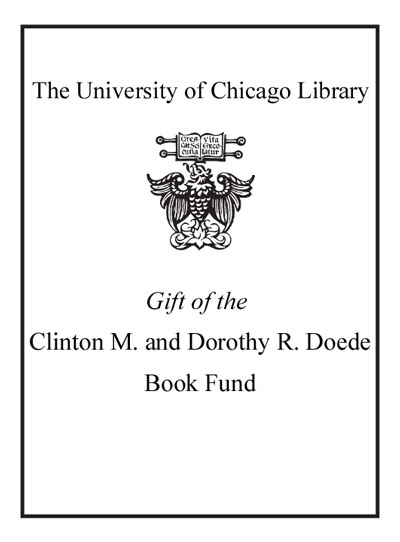An introduction to scientific computing with Matlab and Python tutorials /
Saved in:
| Author / Creator: | Xu, Sheng, 1973- author. |
|---|---|
| Edition: | First edition. |
| Imprint: | Boca Raton, FL : CRC Press, 2022. ©2022 |
| Description: | 1 online resource ( xv, 381 pages) : illustrations |
| Language: | English |
| Subject: | |
| Format: | E-Resource Book |
| URL for this record: | http://pi.lib.uchicago.edu/1001/cat/bib/12956158 |
Table of Contents:
- Cover
- Half Title
- Title Page
- Copyright Page
- Dedication
- Contents
- Preface
- Author
- 1. An Overview of Scientific Computing
- 1.1. What Is Scientific Computing?
- 1.2. Errors in Scientific Computing
- 1.2.1. Absolute and Relative Errors
- 1.2.2. Upper Bounds
- 1.2.3. Sources of Errors
- 1.3. Algorithm Properties
- 1.4. Exercises
- 2. Taylor's Theorem
- 2.1. Polynomials
- 2.1.1. Polynomial Evaluation
- 2.2. Taylor's Theorem
- 2.2.1. Taylor Polynomials
- 2.2.2. Taylor Series
- 2.2.3. Taylor's Theorem
- 2.3. Alternating Series Theorem
- 2.4. Exercises
- 2.5. Programming Problems
- 3. Roundoff Errors and Error Propagation
- 3.1. Numbers
- 3.1.1. Integers
- 3.2. Floating-Point Numbers
- 3.2.1. Scientific Notation and Rounding
- 3.2.2. DP Floating-Point Representation
- 3.3. Error Propagation
- 3.3.1. Catastrophic Cancellation
- 3.3.2. Algorithm Stability
- 3.4. Exercises
- 3.5. Programming Problems
- 4. Direct Methods for Linear Systems
- 4.1. Matrices and Vectors
- 4.2. Triangular Systems
- 4.3. GE and A=LU
- 4.3.1. Elementary Matrices
- 4.3.2. A=LU
- 4.3.3. Solving Ax = b by A=LU
- 4.4. GEPP and PA=LU
- 4.4.1. GEPP
- 4.4.2. PA=LU
- 4.4.3. Solving Ax = b by PA=LU
- 4.5. Tridiagonal Systems
- 4.6. Conditioning of Linear Systems
- 4.6.1. Vector and Matrix Norms
- 4.6.2. Condition Numbers
- 4.6.3. Error and Residual Vectors
- 4.7. Software
- 4.8. Exercises
- 4.9. Programming Problems
- 5. Root Finding for Nonlinear Equations
- 5.1. Roots and Fixed Points
- 5.2. The Bisection Method
- 5.3. Newton's Method
- 5.3.1. Convergence Analysis of Newton's Method
- 5.3.2. Practical Issues of Newton's Method
- 5.4. Secant Method
- 5.5. Fixed-Point Iteration
- 5.6. Newton's Method for Systems of Nonlinear Equations
- 5.6.1. Taylor's Theorem for Multivariate Functions
- 5.6.2. Newton's Method for Nonlinear Systems
- 5.7. Unconstrained Optimization
- 5.8. Software
- 5.9. Exercises
- 5.10. Programming Problems
- 6. Interpolation
- 6.1. Terminology of Interpolation
- 6.2. Polynomial Space
- 6.2.1. Chebyshev Basis
- 6.2.2. Legendre Basis
- 6.3. Monomial Interpolation
- 6.4. Lagrange Interpolation
- 6.5. Newton's Interpolation
- 6.6. Interpolation Error
- 6.6.1. Error in Polynomial Interpolation
- 6.6.2. Behavior of Interpolation Error
- 6.6.2.1. Equally-Spaced Nodes
- 6.6.2.2. Chebyshev Nodes
- 6.7. Spline Interpolation
- 6.7.1. Piecewise Linear Interpolation
- 6.7.2. Cubic Spline
- 6.7.3. Cubic Spline Interpolation
- 6.8. Discrete Fourier Transform (DFT)
- 6.9. Exercises
- 6.10. Programming Problems
- 7. Numerical Integration
- 7.1. Definite Integrals
- 7.2. Numerical Integration
- 7.2.1. Change of Intervals
- 7.3. The Midpoint Rule
- 7.3.1. Degree of Precision (DOP)
- 7.3.2. Error of the Midpoint Rule
- 7.4. The Trapezoidal Rule
- 7.5. Simpson's Rule
- 7.6. Newton-Cotes Rules
- 7.7. Gaussian Quadrature Rules

